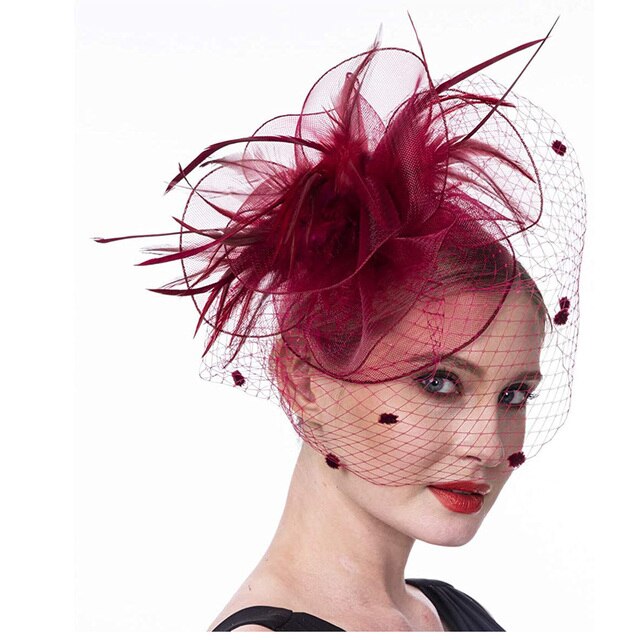
Introduction
Fascinators, those delightful and whimsical headpieces adorned with feathers, flowers, and intricate designs, have a long and captivating history. These eye-catching accessories have been worn by women for centuries, adding a touch of elegance and intrigue to their ensembles. In this blog post, we will take a journey through time to explore the fascinating history of fascinators, tracing their origins, evolution, and enduring appeal.
Origins: A Fascination with Fascinators
Fascinators can trace their origins back to the early 19th century, when they emerged as an alternative to the traditional bonnet. It was during the Victorian era that these elaborate headpieces gained popularity among fashionable women, particularly in the upper echelons of society. The term “fascinator” itself derived from the word “fascinate,” reflecting the captivating nature of these accessories.
Royal Influence: Fascinators in the British Aristocracy
The British aristocracy played a significant role in popularizing fascinators. Queen Victoria, known for her distinctive fashion choices, often wore elaborate headpieces adorned with feathers, lace, and jewels. Her influence set a trend among the elite, and soon fascinators became a must-have accessory for high society events, such as horse races, weddings, and garden parties.
The Roaring Twenties: Fascinators in the Jazz Age
The 1920s marked a significant shift in fashion and societal norms, and fascinators experienced a resurgence during this era. As women embraced the liberating spirit of the Jazz Age, they sought headpieces that were bold, glamorous, and unique. Fascinators with feather plumes, sequins, and intricate beadwork became the epitome of style and sophistication, perfectly complementing the flapper dresses and bobbed hairstyles of the time.
Hollywood Glamour: Fascinators in Film and Entertainment
Fascinators captured the imagination of Hollywood and became synonymous with old-world glamour. In films of the mid-20th century, leading ladies like Audrey Hepburn and Grace Kelly donned fascinators, elevating them to the realm of timeless elegance. These star-studded endorsements cemented fascinators as a symbol of femininity and sophistication.
Modern Resurgence: Fascinators in Contemporary Fashion
In recent years, fascinators have experienced a revival, becoming a staple accessory for special occasions and formal events. Designers and milliners have embraced the versatility of fascinators, creating modern interpretations that blend traditional craftsmanship with contemporary aesthetics. Fascinators can now be found in a wide array of styles, colors, and materials, allowing women to express their individuality and make a fashion statement.
Crafting Fascinators: A Labor of Love
The creation of fascinators is an art form in itself. Skilled milliners painstakingly handcraft these headpieces, using techniques passed down through generations. The process involves shaping wire frames, attaching feathers, arranging flowers, and embellishing with beads or crystals. Each fascinator is a unique masterpiece, reflecting the creativity and craftsmanship of the designer.
Fascinators Around the World: Cultural Variations
While fascinators are often associated with British fashion and traditions, similar headpieces can be found in various cultures around the world. In countries like Australia, New Zealand, and South Africa, fascinator-like headpieces are worn during horse racing events and formal occasions. These headpieces showcase regional influences, incorporating native flowers, feathers, and cultural motifs.
Wearing Fascinators: Styling Tips and Etiquette
When it comes to wearing fascinators, there are a few key considerations to keep in mind. The size and style of the fascinator should complement the overall outfit and occasion. It’s essential to position the fascinator correctly on the head, ensuring it stays secure and doesn’t obstruct the wearer’s vision. Fascinators are typically worn at a slight angle, adding a touch of flair to the ensemble.
Fascinators Beyond Formal Events: Embracing Everyday Glamour
While fascinators are often associated with special occasions, there is a growing trend of incorporating these headpieces into everyday fashion. Fashion-forward individuals are experimenting with wearing fascinators to elevate their casual outfits and embrace a sense of everyday glamour. Whether paired with a chic sundress or a tailored blazer, fascinators can add a touch of whimsy and individuality to any ensemble.
Conclusion
The history of fascinators is a testament to their enduring allure and timeless elegance. From their origins as alternative headwear to their royal and Hollywood endorsements, fascinators have evolved alongside fashion and societal trends. Today, they continue to captivate fashion enthusiasts, allowing wearers to express their style, embrace tradition, and celebrate the artistry of these exquisite headpieces.
So, the next time you don a fascinator, take a moment to appreciate the rich history and craftsmanship behind this enchanting accessory. Let it transport you to a bygone era of elegance and sophistication, while also celebrating the modern-day allure of fascinators in contemporary fashion.
